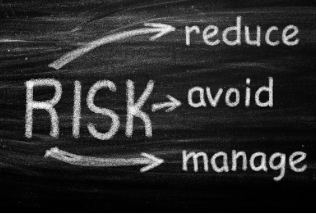“Jail Time for Senior Management: Know Your Legal Implications and How to Protect Yourself”
“Jail time for senior management accountable for workplace health and safety offences: Know your legal implications and how to protect yourself”
Working in a senior management role comes with a host of additional responsibilities. What might not be as widely known is that, as a director or senior manager, you can be held legally accountable for health and safety incidents at your workplace that are caused by someone else you oversee. While the thought of being legally implicated for something you didn’t personally do can be unsettling, it’s essential to understand the legal implications and how to protect yourself. In this article, we’ll delve into the legal aspects, scenarios when a health and safety manager can be prosecuted for others’ offences, and strategies to safeguard yourself from legal ramifications.
Understanding Health and Safety at Work Act responsibilities
Before we explore this topic further, let’s get acquainted with the Health and Safety at Work Act 1974 (HASAWA), which is the overarching legislation regulating workplace health and safety in the UK. According to HASAWA, the employer holds a legal responsibility for ensuring the health and safety of all employees, visitors, and the public present in the workplace.
As an employer, your occupational health and safety (OH&S) duties include:
- Establishing a safe working environment
- Ensuring the safety of existing work practises and procedures.
- Guaranteeing the safety of equipment and machinery used in the workplace.
- Overseeing the risk management process, including risk assessments to identify, assess, and control potential workplace risks
- Providing adequate training, communication, and information regarding hazard identification and accident prevention
To fulfil these duties effectively, it’s vital to assign responsible individuals within your organisation to implement health and safety procedures and oversee their execution. Be clear on your legal implications, as any failure on their part could lead to your prosecution because you share liability for the actions of your employees and management team.
Your Liability under Section 37 of the Health and Safety at Work Act
Section 37 of the Health and Safety at Work Act 1974 is central to our discussion. This section deals with “secondary liability,” where responsibility for an offence committed within a business is shared with superiors. Section 37 applies when the following conditions are met:
- An offence is committed under relevant statutory provisions by a body corporate.
- The offence is committed with the consent, connivance, or neglect of the accused.
- The accused is a director, manager, secretary, or another similar officer, or a member of a body corporate managed by its members.
In simple terms, if you hold a position of power within your business and have the authority to influence procedures, you can be held accountable for offences committed by your subordinates if it can be proven that you had the power to prevent them. This includes situations where you had prior knowledge of the facts and agreed with your employee’s actions based on that knowledge, as well as if the offence occurred due to your neglect of your duty to ensure the health and safety of those under your supervision.
Section 37 does not attribute liability based on your job title; instead, it aims to establish that you, the accused, had actual authority in the decision-making that led to the offence – the legal implications are aimed directly at you.
Your legal implications under Section 37
To establish your secondary liability if you’re a director or senior manager accused of a health and safety offence within your organisation, the prosecution must demonstrate that you:
- Knew about the offence and agreed to it (consent).
- Knew about the offence (connived).
- Neglected your health and safety duties, directly contributing to the offence.
- Could have taken steps to prevent the offence but failed to do so.
- Instructed or pressured the person who committed the offence.
- Had knowledge of the issue or were previously made aware of it.
- Shared responsibility with other members of the management team.
For a successful prosecution under Section 37, there must be sufficient evidence to support the claim that you held a position of responsibility within the management structure. It is also considered whether your prosecution is fair and warranted by others.
Consequences of a guilty verdict
Ignorance of the law and legislation cannot serve as a defence under Section 37 of the Health and Safety at Work Act 1974. If found guilty, you could face disqualification as a Director under the Company Directors Disqualification Act 1986 or even imprisonment for up to two years. The stark reality of these legal implications cannot be ignored.
Protecting yourself from prosecution
To shield yourself from prosecution, effective workplace health and safety management is paramount. Key steps to ensure compliance with the law and understanding your legal implications include:
- Regularly conducting risk assessments. (What does this look like monthly?)
- Supervising the implementation of the risk management process. (How many actions are on the risk action plan?)
- Continuously reviewing and improving your risk management plan. (Check reviews vs change of date and re-sign.)
- Providing comprehensive OH&S training for all staff members. (What percentage is it now, and will it be better next month?)
- Effectively communicating internal health and safety directives to relevant parties. (Who owns what and have they done it?)
- Establishing clear organisational roles and responsibilities for health and safety (Did your systems update in October 23 when the new fire regulations changed? Who should have done it)
- Maintaining records of all risk assessments and management processes for at least 10 years. (Could you get hold of all information for one particular day, proof of understanding, training in procedures as well as risk assessments, evidence that checks were completed.)
How OpsPal can help
OpsPal offers a comprehensive, all-in-one solution for risk management processes, ensuring compliance with health and safety standards in your industry. Its digital platform simplifies the oversight of health and safety activities, providing real-time access to information on new risks, control implementation, and dashboards so you can see live how you are getting on—no surprises. With its collaborative features, OpsPal keeps everyone involved and informed about workplace safety risks, ensuring industry best practises are met. On top of that, OpsPal also drives the operations of the whole business, from onboarding task management to producing training matrices to ensure you stay compliant.
One of our clients had a fire, and they needed proof for the following:
- Risk Assessments trained in for fire, electrical safety and plant rooms for all staff
- Procedures trained in fire, including evacuation and how to prevent safe use of chemicals
- Tasks completed: evacuation within the last 6 months; checks done on the day; daily open checks covering if fire doors were safe; weekly fire alarm tests; and monthly checks that fire equipment was available and safe to use.
It took them 4 minutes and 26 seconds to find all the information and know they were compliant using OpsPal.
Do a trial run and see how you compare. If you think you are okay, then you need us. As our customers KNOW THEY ARE OKAY.
Contact OpsPal to see how we can help you make sure you don’t face the legal implications of going to jail.












